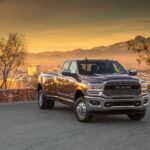Classic Chevy trucks, especially those from the 1970s, hold a special place in automotive history. Their rugged design and dependability have made them icons on American roads. If you’re a fan of these vintage pickups, knowing how to identify a 1970s Chevy Truck by its model year is essential, whether you’re looking to restore one, find the right parts, or simply admire them at a show. This guide will walk you through the key features that distinguish Chevy trucks from the 1970s and the late 1960s (building upon our previous guides covering earlier models), helping you pinpoint the exact year of these classic vehicles.
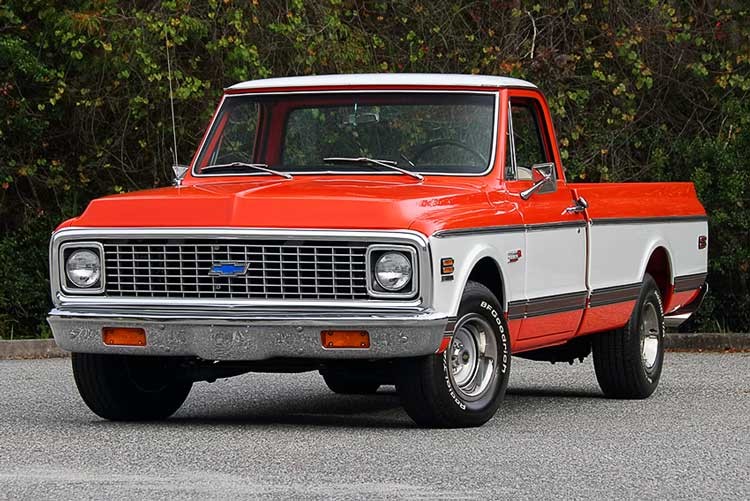 Restored 1971 Chevy C10 Cheyenne at Auction
Restored 1971 Chevy C10 Cheyenne at Auction
A beautifully restored 1971 Chevy C10 Cheyenne pickup truck, showcasing the iconic styling of the era. Image courtesy of Mecum Auctions.
1970 Chevy Truck
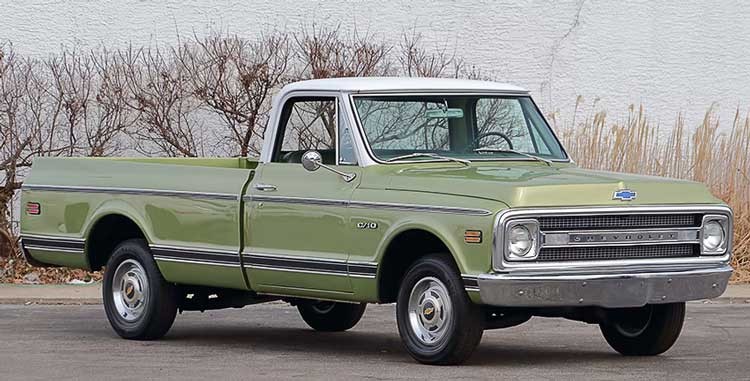 Front view of a 1970 Chevy C10 pickup truck, highlighting the grille design
Front view of a 1970 Chevy C10 pickup truck, highlighting the grille design
The 1970 Chevy truck model year is remarkably similar to the 1969 version, but subtle changes set it apart. The grille maintains the one-piece anodized aluminum design with a central bar that extends to frame the headlamps. However, the plastic grille insert is updated. Instead of the tightly spaced crosshatch pattern of 1969, the 1970 grille features twelve groups of four short horizontal fins. These are arranged in six stacks above and six stacks below the center bar. This year also marked the introduction of the optional 402 cubic inch engine and the implementation of emission controls across all engine options. Like previous years, C models are 2-wheel drive and K models are 4-wheel drive. Engine codes and model designations remained consistent with prior years as well.
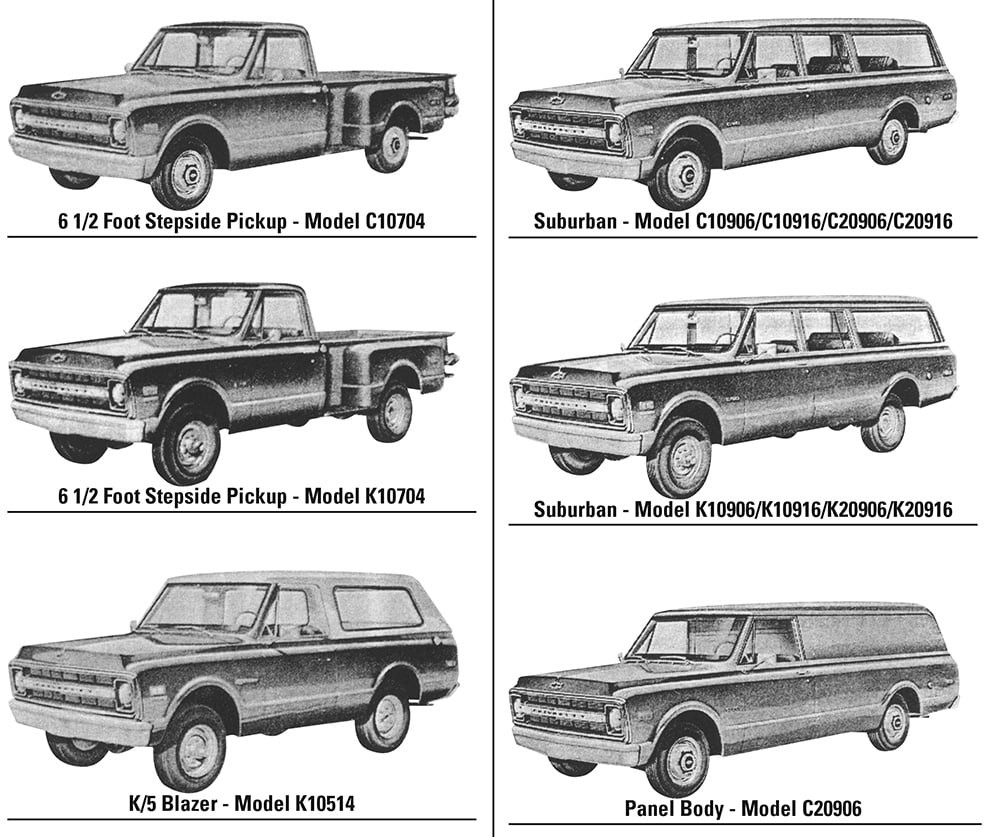 1970 Chevy Truck Model Year Identification Sheet
1970 Chevy Truck Model Year Identification Sheet
An original GM documentation page outlining key features for identifying a 1970 Chevy truck model year.
1971 Chevy Truck
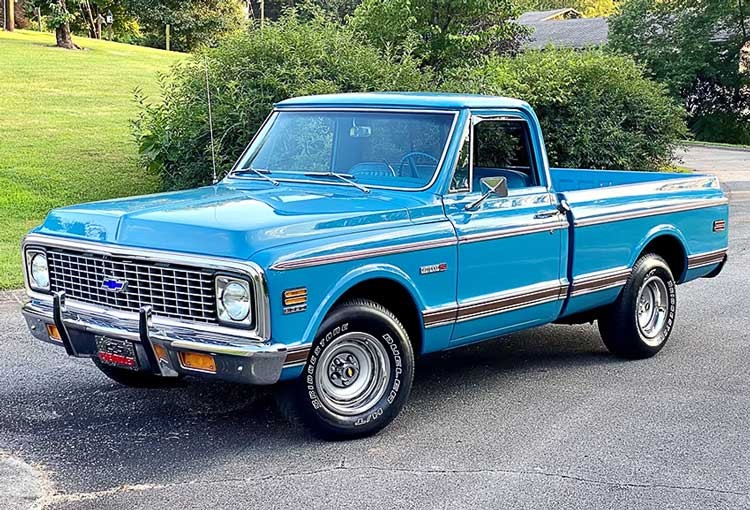 Front grille of a 1971 Chevy C10 Cheyenne, emphasizing the redesigned grille and Bow Tie emblem
Front grille of a 1971 Chevy C10 Cheyenne, emphasizing the redesigned grille and Bow Tie emblem
The 1971 Chevy truck brought a more noticeable grille redesign. The entire grille area is now surrounded by a large anodized aluminum trim piece, giving it a bolder look. The plastic insert features an “egg-crate” rectangular pattern. A prominent Bow Tie emblem is positioned in the center of the grille, making it a focal point. GMC models also received a slightly modified grille design for this year. Functionally, 1971 was a significant year as it marked the introduction of standard front-wheel disc brakes, a welcome upgrade for improved stopping power. The top-of-the-line trim level was now designated “Cheyenne,” and these deluxe and Cheyenne models often sported eye-catching two-tone paint schemes. A practical change was the relocation of the park lamps to the front bumper. Lastly, 1971 was the final year for the inside rearview mirror bracket to be screwed into the area above the windshield; later models would use an adhesive mount. Model series and engine codes continued the established conventions of C and K designations and E/S engine codes.
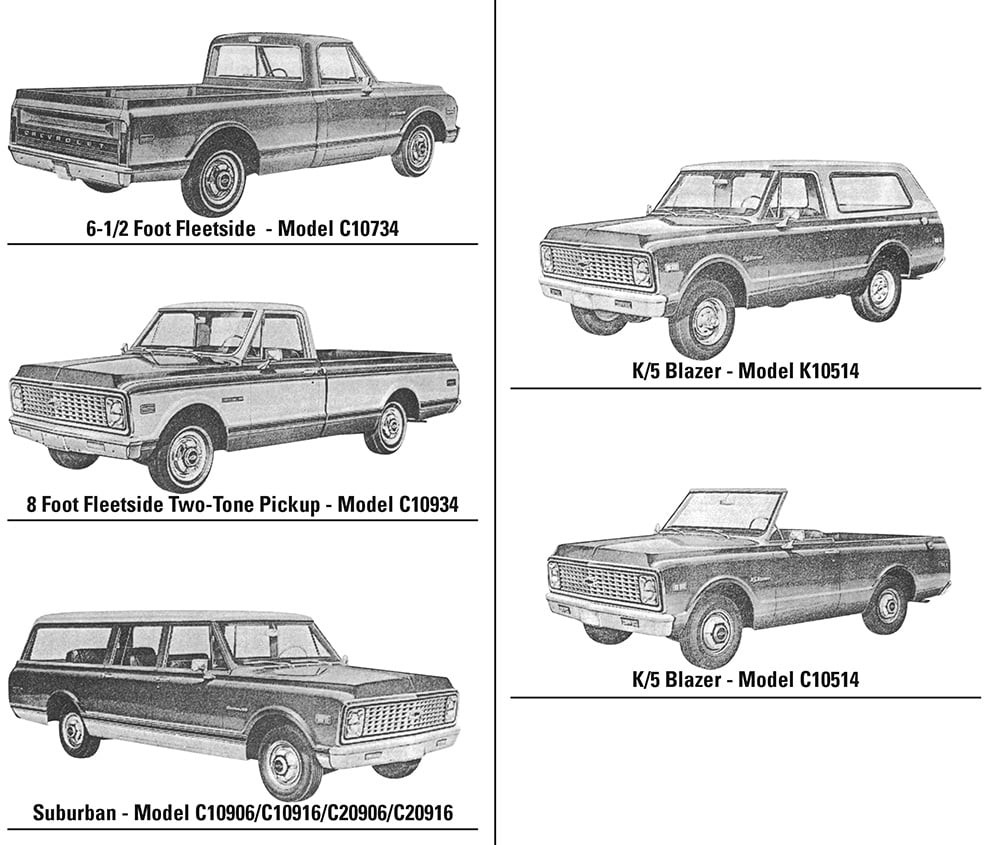 1971 Chevy Truck Model Year Identification Sheet from GM
1971 Chevy Truck Model Year Identification Sheet from GM
Original General Motors documentation highlighting the key identification points for the 1971 Chevy truck model year.
1972 Chevy Truck
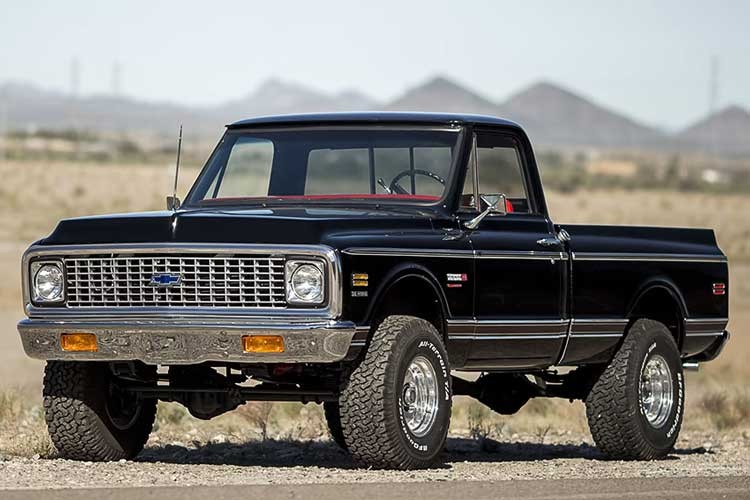 Front quarter view of a 1972 Chevy K10 Cheyenne Super, showcasing the final year of this body style
Front quarter view of a 1972 Chevy K10 Cheyenne Super, showcasing the final year of this body style
The 1972 Chevy truck is significant as the last year of this highly popular body style that began in 1967. Visually, the 1972 models are the most challenging to distinguish from the 1971 trucks without checking the Vehicle Identification Number (VIN). The most apparent change is inside the cab: the rearview mirror is now glued directly to the windshield, a feature common in modern vehicles, replacing the screw-mounted bracket of previous years. Interior updates also included changes to fabric and door panel designs. Mechanically and in terms of model designations (C/K, engine codes), the 1972 trucks remained consistent with the preceding year.
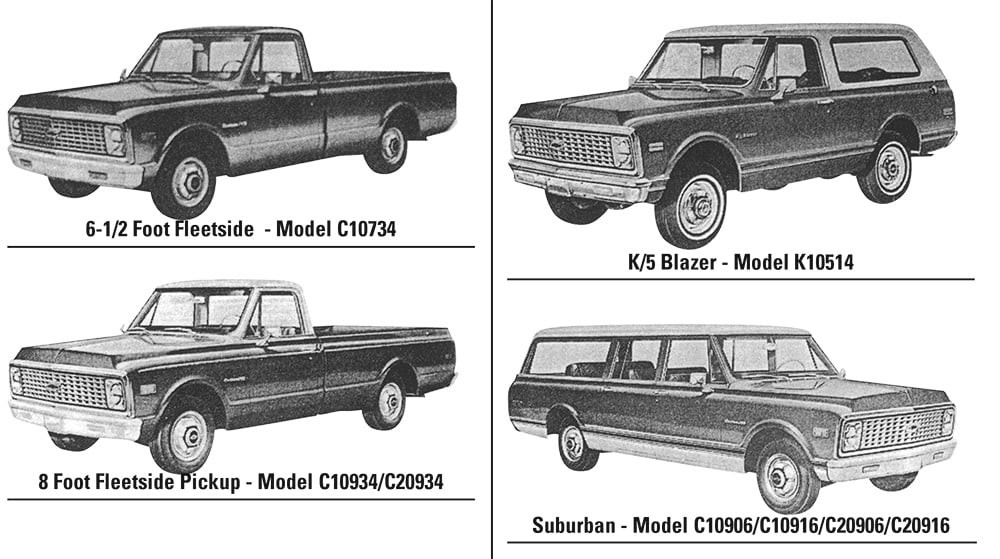 1972 Chevy Truck Model Year Identification Guide
1972 Chevy Truck Model Year Identification Guide
A GM document providing a visual reference for identifying a 1972 Chevy truck, the final year of this iconic generation.
Tracing Back to the 1960s: Key Changes Leading to the 1970s Chevy Truck Style
To fully appreciate the 1970s Chevy trucks, it’s helpful to understand the evolution of the design throughout the 1960s. The 1960 model year marked a dramatic shift, introducing a completely new body style with a torsion bar front suspension and coil spring rear suspension. The grille was low-mounted with horizontal bars, and the windshield was a wrap-around design.
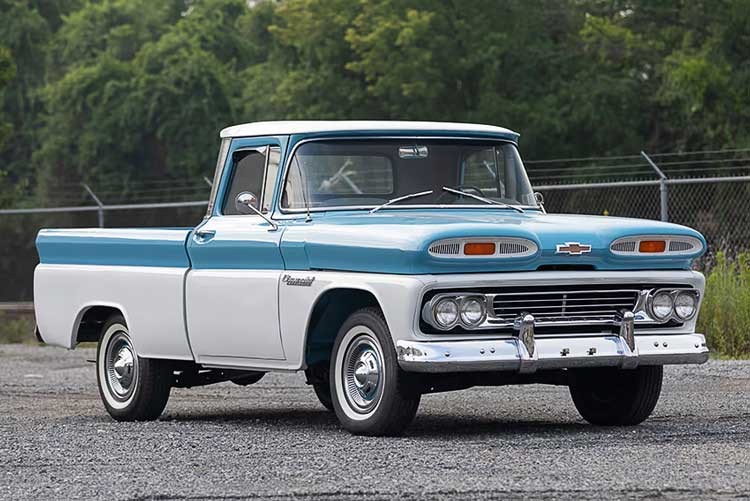 1960 Chevy Apache Truck Front View
1960 Chevy Apache Truck Front View
A 1960 Chevy Apache truck, representing the groundbreaking design changes at the start of the decade.
The early 1960s models (1960-1963) saw incremental changes to grilles and emblems. 1964 brought another major cab redesign with a flatter windshield and a full-width dashboard.
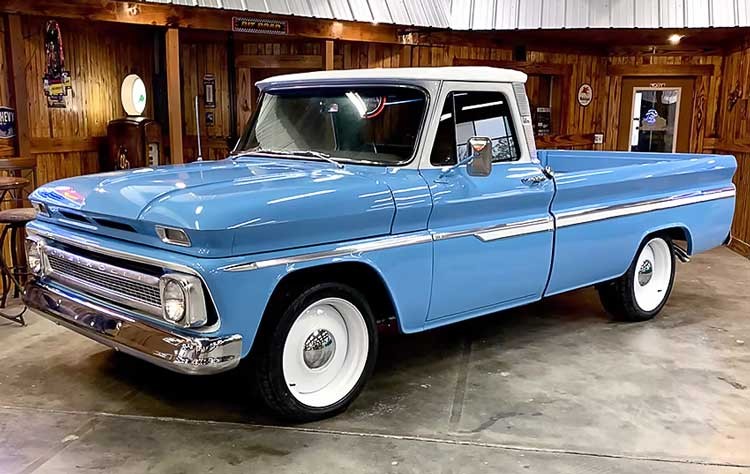 1964 Chevy C10 Truck Front View
1964 Chevy C10 Truck Front View
A 1964 Chevy C10 showcasing the redesigned cab and flatter windshield introduced that year.
1967 ushered in the body style most closely associated with the “classic” Chevy truck look, featuring a two-piece rectangular grille, and a departure from previous designs. Side marker lamps were absent in 1967 but added in 1968, along with the discontinuation of the small back window option. 1969 brought a new one-piece aluminum grille and fender emblems indicating series and model.
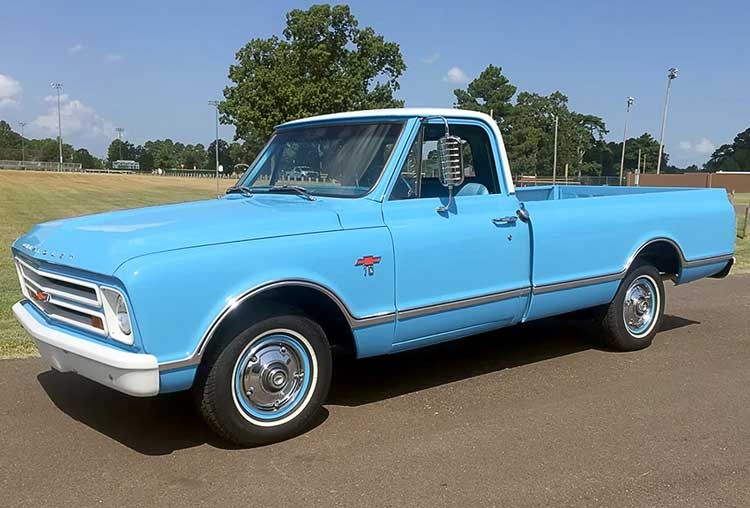 1967 Chevy C10 Truck Grille and Front View
1967 Chevy C10 Truck Grille and Front View
The redesigned grille of a 1967 Chevy C10, a key feature of the body style that extended into the early 1970s.
This progression of changes culminated in the refined and recognizable aesthetics of the 1970-1972 Chevy trucks, solidifying their place as icons of the era.
Find Your Chevy Truck Parts
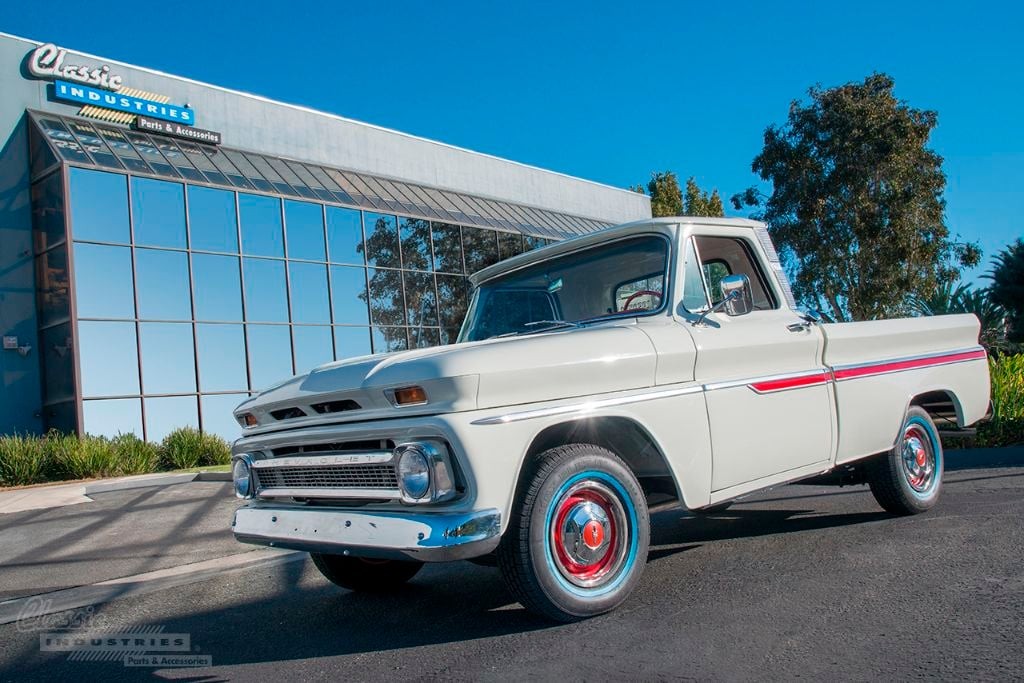 1966 White Chevy Truck and Parts Catalog
1966 White Chevy Truck and Parts Catalog
Whether you’re restoring a 1970s Chevy truck or working on an earlier model, finding the correct parts is crucial. Classic Industries offers a wide selection of restoration and replacement parts for Chevy and GMC trucks from 1947 through 2008. From body panels and trim to engine components and interior parts, we have what you need to keep these classic trucks on the road. Explore our online catalog or request a free parts catalog today to start your restoration journey.
[
